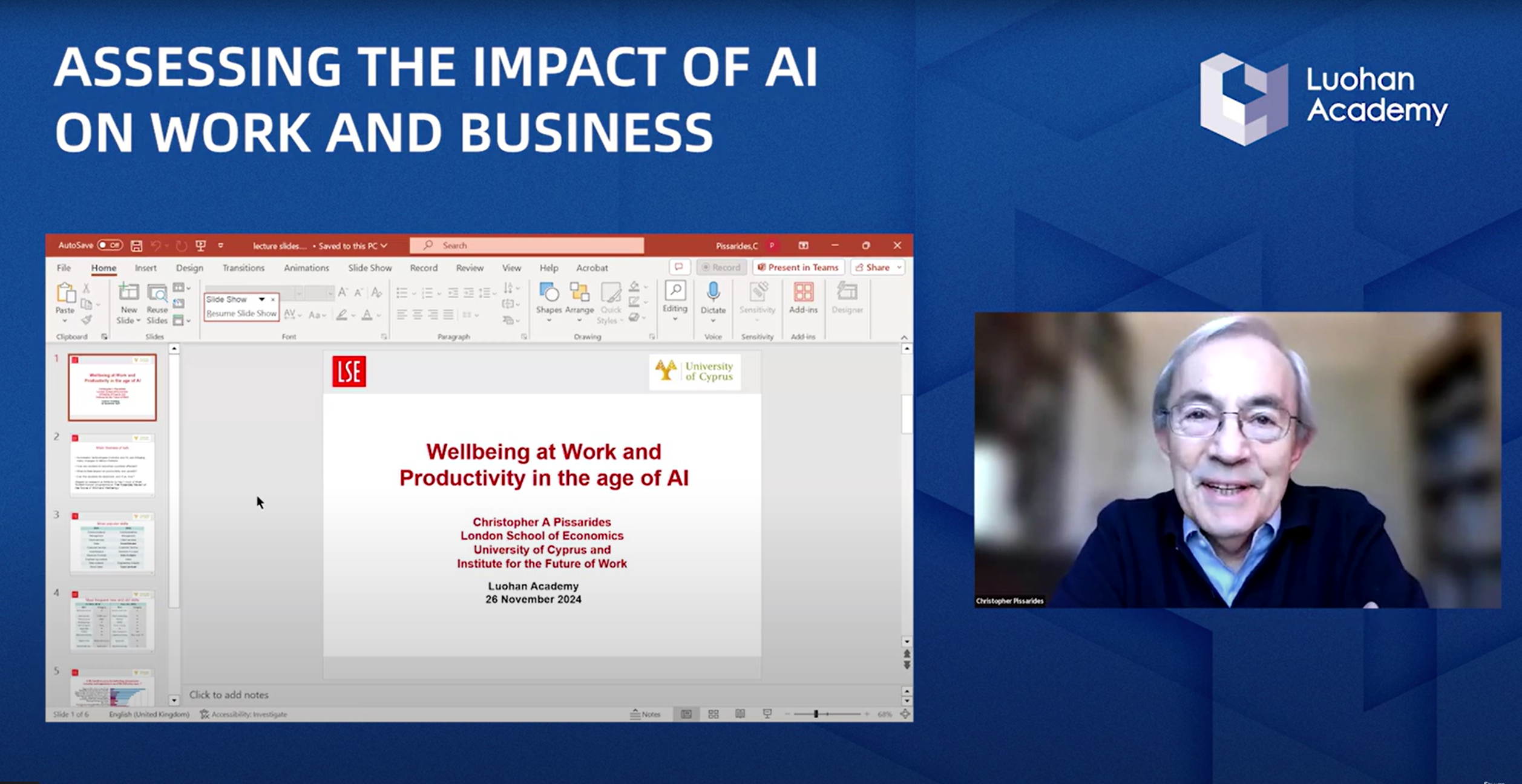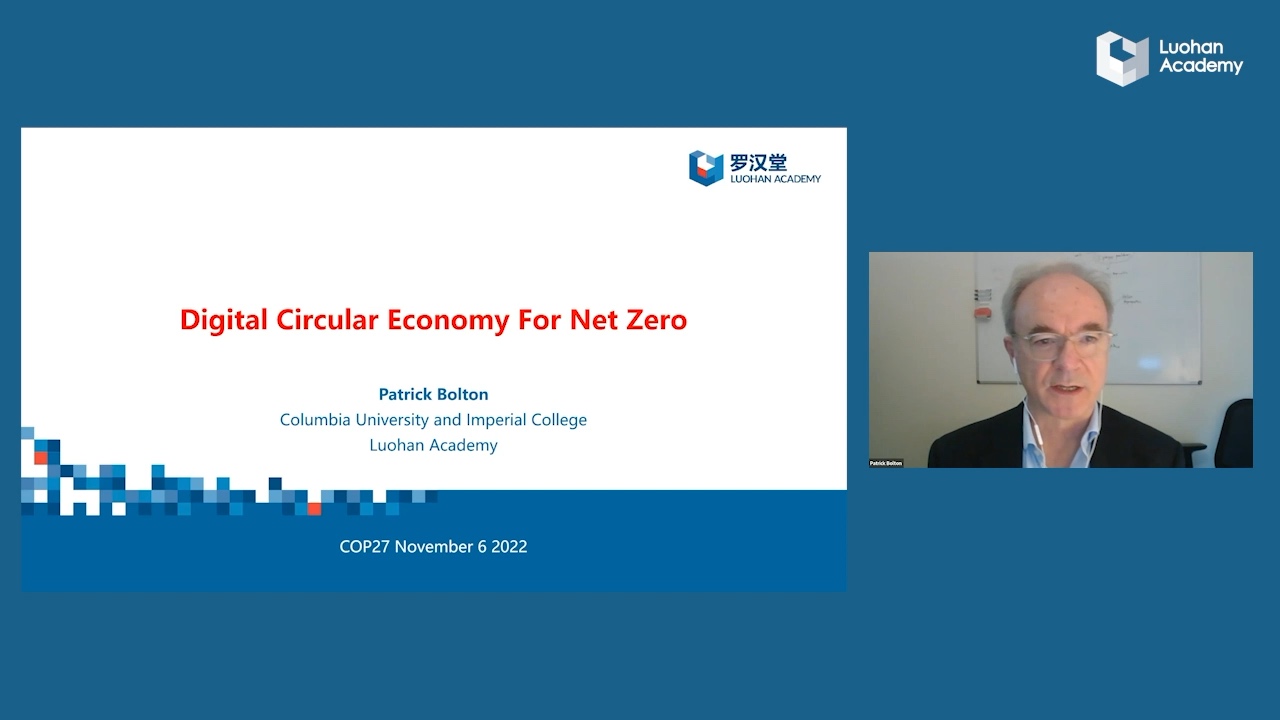For many decades, the Coase theorem of the "Division of Labor" between organizations and markets has been the fundamental framework for understanding resource allocation and coordination mechanism. However, with the emergence of digital technology and platforms, traditional boundaries are disappearing before our very eyes and giving way to the facilitation of large-scale coordination with unprecedented participation. The application of digital transformation is changing the nature of work and the structure of the economy. While digital platforms have enabled innovations and new coordination mechanisms, they also pose challenges ahead.
The 2nd Frontier Dialogue of Luohan Academy focuses on the "New Coordination and Market Dynamics". Its very purpose is to provide a place for prominent scholars, industry experts, policymakers to exchange views and address critical issues in practice regarding this topic. In particular, we hope to initiate discussions on what digital transformation means for crucial issues such as economic growth, inclusion, innovation, and competition.
Long Chen currently serves as the Director of Luohan Academy, he is also executive provost of Hupan University of Entrepreneurship. Before that He was the chief strategy officer of Ant Financial Group. Chen received his Ph.D. in Finance from University of Toronto, and was a tenured professor at Olin Business School, Washington University.
Transcript:
Long Chen:
Okay. Okay. So firstly, I'm happy and honored to see so many outstanding scholars to show up at this workshop. So despite the fact that we have so many great experts, I ventured to talk about the digital platform from China's perspective in the hope that it might provide a useful angle for the audience to understand what digital platform is and where it is going. Now, China's digital economy is somehow special in the sense that it has become a macro phenomenon. If you look at the talking about scalability part. So most of us have witnessed China's rise has become the second largest economy in the world. But what was somewhat underappreciated is that China's rise of the digital economy. If you look at this, China's online consumption, the ecommerce, back in around 2010, China's ecommerce out of the retail sales was about 1%, which is below many countries. But in the past 10 year or so. Now, China's online consumption accounts for about more than 25% of the retail sales in China. So online consumption has become a macro phenomena in China, it's very scalable. Now, by doing so, then if we take the marketplace as a classic case of human coordination, we can see that digital technology has broken the traditional boundaries of the market. So this graph shows that the average distance between a buyer and seller on Alibaba taobao.com is around 1000 kilometers. I think similar numbers can be seen on other platforms. So that breaks the traditional boundaries of coordination. And it also means that it is leading to very broad participation. So on Alibaba's taobao.com , we have more than hundreds of millions of users and 10s of millions of the SMEs serving them. So if you look at it on inclusion side, then can see that actually, on the left panel can see that the people from the less wealthy regions, they do not spend less online proportionally than people from the more wealthy regions. And more interestingly, this spent many more varieties on the online consumption. And it's easy to understand because they don't have good super malls in their local areas. And also their online consumptions grow faster. So that is the inclusion dimension. Now, if we look at the participants, as I mentioned, we have more than 10 million active SMEs on taobao.com , I'm just using the Alibaba as my example. But you can see that half of the entrepreneurs are actually women. I'm not talking about women as employees, I'm talking about they're entrepreneurs. And also even in the digital industries, their shares of the market is also increasing. So that's another dimension of inclusion. Now, it has led to, I think, unprecedented level of participation, and it could lead to inclusion, it can also bring about innovation. I'm just giving you one example, if you look at sweaters, women sweaters. Now, if you define them on the two space of the style and the design elements, you can see thousands of combinations, now they are online. And if you look at the prices, the online and offline prices, you can see that online prices, even though they have many more varieties, but actually the price is somehow going down compared to the offline market because it's more competitive.
Now, I'm talking about some of the China's example is interesting in the sense that you have this two sided markets.
Together, it has led to a macro phenomenon. Now if we take a look at the mechanisms of those that digital platforms, as you can see that technologies play a key role in this mechanisms to make them work. So one interesting thing, of course, is to make use of the data. So this is one particular paper by a professor Sun and others of course, I believe he's also at Cornell. And this is to look at the what happens if there's no personal information that is used for the search and matching. So a lot of time we'll forget about what exactly is the value of data. So what this natural experiment shows is that if actually, if in the search and matching online, if you do not use the personal data, and basically, it's very hard to know what's the consumers wants. So, the recommendation will go to the top 1% of the brands, so, immediately can see that the click through rates will go down dramatically. And actually the purchase will goes down to a whopping 80%.So, you can see that without the data to help the buyers to find the sellers, then the efficiency of the market will go down. And that's what AI does as the professor Gans was trying to say to make the mechanism work. Other parts of the mechanism includes the contracting technology, I call this. So that includes for example, everybody needs to have identities, and also have the authenticity of the commodities. So on Alibaba platform, 97% of the fake products will be identified before they can sell a first piece. Now we also have the safety of the payments, etc.
So all those things together to make it as if every product and every person has identity, hundreds, millions people as if they are trading with each other in the same market. Now, also, the digital technology is used to create a new system of trust. So this is how all the commodities and all the sellers are rated. And you can see that the better rating companies, they sell better, much better. So that breaks through the traditional problem of asymmetric information. But the wonderful thing is that this information in this trust of system is created by all the participants by the users, not by the central planners. Now, other parts of the mechanism. So on Alibaba's platforms that also provides something called the business advisor, that is managed to help the new sellers to read through the information to try to learn to do the business. As you can see it provides different types of information, including traffic, competitors, market trends, etc. As you can see, immediately their sales is going to jump up dramatically after they study to use this information. So that's the power of the business advisor. As you can see that when you have a two sided market, actually the platform as the operator of the marketplace, it has a lot of incentive to make the players do better on the market. And the business advisor is just one of the tools. So on the Alibaba platform, it has this thing called the QianNiu. It has thousands of the third party applications. Essentially it helps the new startups to do a lot of the things from the design from the marketing, logistics, cash management, a lot of things. The basic tools, I think the Hal Varian mentioned briefly, now it becomes so easy to get access for new startups to make the business so much easier. Now, let me give you another example of the new thing that's coming up. It's called the live streaming in China. Now that in the past three years or so, it has become a really hot phenomenon.
And it is expected to exceed a trillion RMB of the volume this year, and it will double in the next year. So that is really going up quickly. But the what is this live streaming stuff, basically, now you have the video tools to help the sellers and the brands to introduce themselves to the consumers. And if the consumers do not trust them or do not like them enough, they introduced influencers, together they help the buyers make the consumption decisions. So this is a really interesting area, I think I recommend researchers to do, because it has a lot of the interesting stuff about how information is suggested, how the intention of the consumers can be influenced, and how the trust systems can be made. So that is a very interesting areas coming up. And if you compare the results, you can immediately see why it works. So if only the consumers look at the product information online, they have like 4.7% of the conversion rate. But if they have this live streaming, it jumps up to 7.8%.It especially benefits the C2C the small sellers, because they don't have brands nor do they have much a trust system to start with. You can see that it helps them to help the consumers to understand much better, so their sales jump up much more. And this is another graph to see that the smaller sellers benefits much more from convening the information and builds the trust. So now, I've been trying to give you a sense of the China's macro phenomena, it has this odd precedent that participation from the users and the sellers. Now I can also see that when we talk about the digital platforms, they might not be exactly the same in China, as they may not be exact same as the United States. For example, if we look at the e commerce, you can see that there's this healthy divergence of the market share. So Alibaba is still growing in a healthy way. But actually the whole market share is getting more diverse. So Alibaba is going down steadily as new comers are coming up quickly. So if you compare that with the United States is a little bit different. So that's why I'm trying to remind you in different contexts, so the digital platforms, including the two sided platforms that can mean different things in different environment. And you can see that, in the United States, we're familiar with that a Twitter, Facebook, Whatsapp, but you can see that wechat, TikTok, nowadays, they are actually growing much faster. So new innovations, indeed are coming up. It's not like the big tech companies can exactly stop them.
And if we look at the numbers in the United States, if you look at the "who dies easier," you can see it's actually Information Technology is the most competitive, they die faster than in other industries. This last graph I'm trying to show to you is the labor share that is in inequality part. So we understand in the United States. And if you look at what's interesting here is that China's labor shares actually going up, and China's gini coefficient is going down a little bit. That's contrast to the United States. So again, I'm trying to remind you that there's different contexts, when we talk about the digital economics. Let me stop here. What I'm trying to share with you guys is seven points. Firstly, digital technology has largely enhanced humans ability to cooperate, actually, we can operate a marketplace using the digital technologies, so that it changes our ability to do the coordination. Now it has broken the traditional boundaries of coordination, it could lead to unprecedented participants and opportunities. So there's ample evidence of inclusion for both consumers and producers. And the platforms can achieve so by building the infrastructure of the two sided markets using a digital technology. It is unclear that if digital technology or big data will for sure lead to "Winner takes all." There exists ample contrary evidence. Let me give you a final example in China. In several years ago, they were talking about BAT, that is the Baidu, Tencent, and Alibaba. They are talking about the big companies, but that word, nobody mentions that anymore, because the Big Data company, Baidu is really lagging behind. So I guess my final point here is that, I do believe that as new regulation policies are needed for the digital platform, but I guess we need to go beyond the traditional difference between the markets, companies will have to think about the value of the new coordination, the value of the data platforms especially two sided platforms that can operate as the operator of the markets that changes our opportunity of the coordination. I stop here. Thank you.
For more information, please visit Luohan Academy's youtube channel: Luohan Academy









